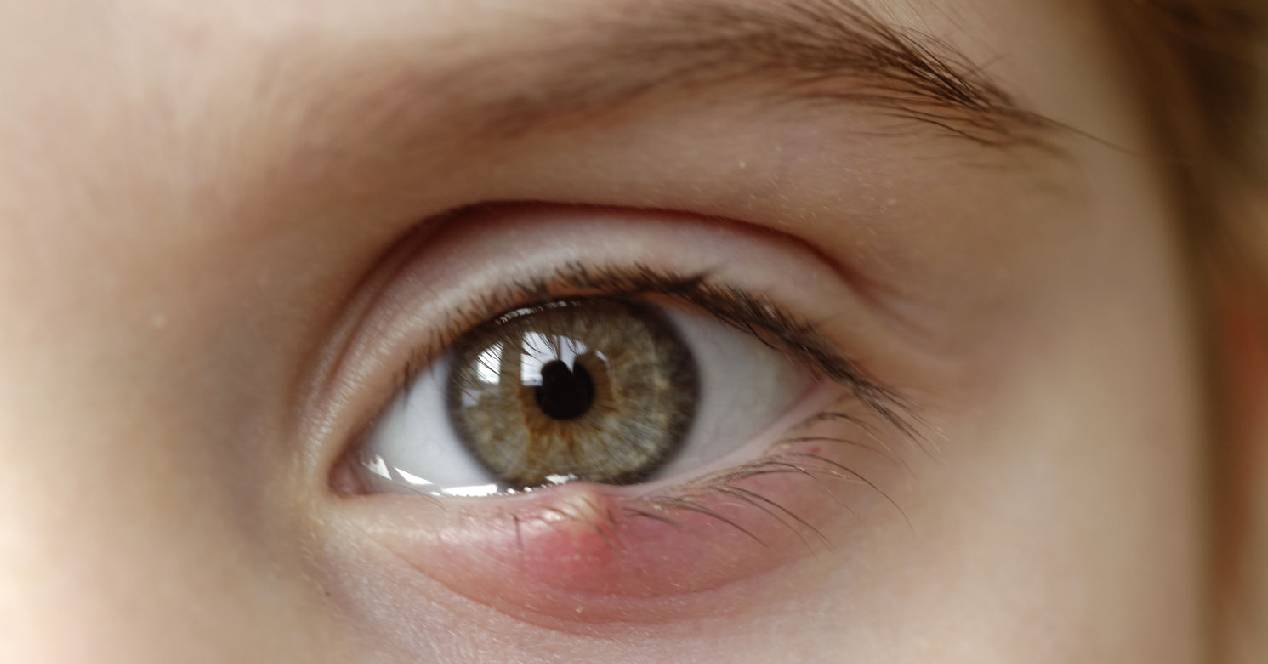
At any unexpected moment we can have the bad luck of suffering from a stye. Surely you have gone through this or you still find yourself with a swollen eyelid. It has a pimple appearance, but its symptoms go beyond a simple visual discomfort. We tell you everything about styes and how to treat them for a prompt elimination.
What is a stye?
When an oil gland at the edge of the eyelid swells, it creates a bump. A stye is a small red bump that looks like a pimple and is quite painful. Most usually contain pus and usually form on the outside of the eyelid, although they also exist internally.
Most commonly, the stye will go away in about four days, but you must take certain precautions so as not to worsen the healing process. And in case it lasts too long, go to the doctor to assess it.
What can be the causes of its appearance?
Staphylococcal infection
It is the most common cause (9 out of 10 cases). The infection is caused by the bacteria that we have on the skin and in the nose, and which are normally harmless, although they are the cause of infections in many wounds. The problem occurs when direct contact is made with the edge of the eyelid. That is, if you scratch your eyes with dirty hands, if you don't have clean glasses, if you change your contact lenses without disinfecting your fingers or if you neglect your makeup.
Chronic inflammation of the edge of the eyelid
Chronic blepharitis is an inflammation of the edge of the eyelid that usually affects both eyes, causing irritation and redness. Blepharitis is an inflammation that affects the eyelash follicles and the glands between them. Cases usually occur in people over 50, but it can also occur at any age. As a result of this inflammation, it is very possible that styes appear.
What symptoms does it present?
The most characteristic symptom is a small yellowish spot in the center of the "pimple" located on the eyelid. Even so, it is also usually accompanied by:
- Pain and itching of the eyelids.
- Tearing of the eyes.
- Leganas.
- Swelling.
- Sensitivity to light.
- Red eyes.
- Discomfort when blinking.
Can it be prevented?
Many think that a stye can be passed from one person to another, but it really isn't possible. You must have a lot of hygiene so as not to worsen the situation of your eye and prevent the infection from being transmitted to the other eye or to a person. What you should do is:
- Wash your hands frequently and use sanitizer several times a day. Of course, the ideal is also to avoid contact of your hands with your eyes.
- Check the makeup or cosmetics you apply to your eyes. They may be out of date or have been used by other people. The latter does not mean that that person has an infection, but it can affect the different bacteria in you.
- Keep your glasses and contact lenses clean.
- Avoid putting foreign objects in your eyes. Surely you have not noticed the movie glasses, yoga eye bags or sleep masks.
How is a stye treated?
The first thing we should do is go to the doctor so that, with his special tools, he can check our eyelid and determine that it is a stye. A test may also be done to diagnose the bacteria. In this case, the doctor will make a small incision to reduce the pressure of the sty and obtain a sample of pus.
The most common is that a stye does not need drug treatment, with some home remedies it will be enough.
- Apply warm, wet compresses to the affected area for at least 10 minutes. Repeat four times a day.
- Clean the area around the affected eye.
- Do not squeeze the stye, or move it a lot.
- Do not apply makeup or wear glasses until it has healed.
If it hasn't gone away in a week, see your doctor again to determine what's wrong. On certain occasions, a small operation may be performed.